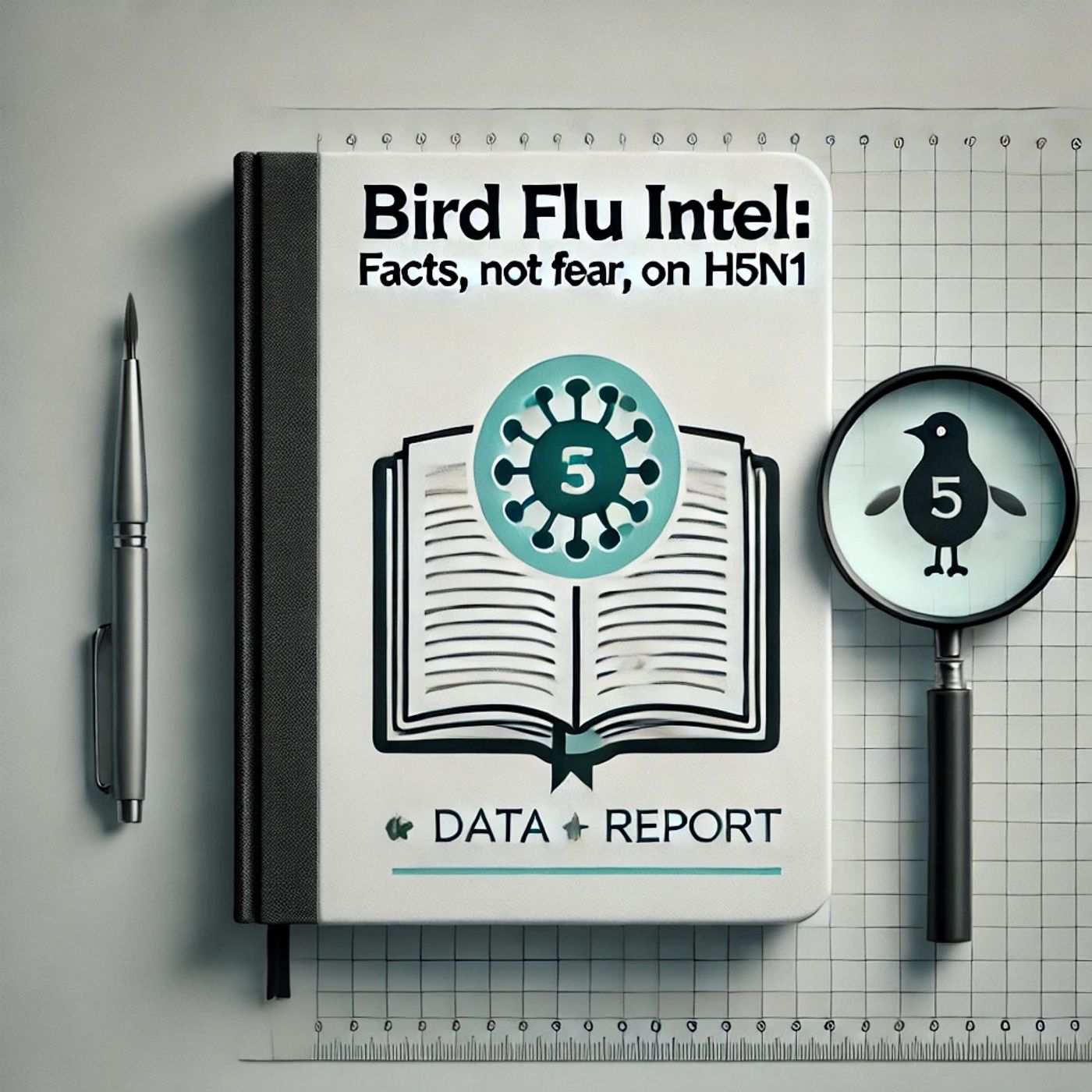Podcast Episode Details
Back to Podcast Episodes
Bird Flu H5N1 Facts: Separating Science from Hysteria and Understanding Current Low Human Transmission Risk
Welcome to Bird Flu Intel: Facts, Not Fear, on H5N1, from Quiet Please. In just three minutes, we're cutting through the noise on bird flu to tackle myths, arm you with science, and explain what’s truly known—and unknown—about H5N1 in 2025.
Let’s jump straight in with some common misconceptions currently making the rounds.
First, there’s the claim that “bird flu is highly contagious among people and a pandemic is imminent.” This is simply not supported by current evidence. According to the US Centers for Disease Control, H5N1 primarily spreads among wild birds and poultry, and while there have been some human infections—mainly among individuals with direct animal exposure—there is still no confirmed sustained human-to-human transmission. The risk to the general public remains low, as echoed by the American Medical Association and recent CDC updates.
Second, you might hear that “catching bird flu from eating chicken or eggs is a major risk.” This is incorrect. Properly cooked poultry and eggs are safe to eat since heat destroys the avian influenza virus. Outbreaks are typically linked to direct contact with sick birds, not food. That’s according to the Global Virus Network and numerous food safety authorities worldwide.
A third myth: “All strains of H5N1 are deadly to humans.” The reality is more nuanced. The current strains circulating in North America have caused mostly mild symptoms in the rare human cases seen, such as eye redness or mild respiratory illness. The overwhelming majority of cases globally occurred after close animal contact, and even among those, most have not resulted in severe illness or death. The University of Florida’s epidemiology group notes that the virus is devastating for poultry flocks but has not shown the same lethality or contagiousness in humans to date.
So why does misinformation spread so easily? The answer is fear, confusion, and digital echo chambers. News of new outbreaks, stories about animal deaths, and scattered cases in humans can be misinterpreted or exaggerated online, particularly when shared without scientific context. This not only fuels anxiety but can also lead to harmful behaviors—like unnecessary culling of pets or overuse of antibiotics.
To evaluate the quality of bird flu information you encounter, ask yourself: Is the source reputable, like the CDC, WHO, or a recognized university? Does it cite current data and specify when it was last updated? Are claims about risk and transmission clearly distinguished between humans and animals? If the answer to any of these questions is no, be skeptical.
Now, where does science stand? There is strong consensus that H5N1 is a serious threat to poultry and wild bird populations. It has shown the ability to infect mammals, including dairy cows and on rare occasions, people, especially those in direct contact with infected animals. Experts emphasize rigorous surveillance and biosecurity to limit further spread, and there’s an urgent need for better monitoring and preparedness—especially as the virus mutates.
But the biggest uncertainties remain: Will H5N1 eventually mutate to allow easier human-to-human transmission? How might additional genetic changes impact both animal and human health? Scientists are watching closely, but for now, the risk to the general public is low and food remains safe if cooked properly.
Thanks for tuning in. Join us next week for more evidence-based myth-busting. This has been a Quiet Please production. For more, check out QuietPlease Dot A I.
For more http://www.quietplease.ai
Get the best deals https://amzn.to/3ODvOta
Published on 17 hours ago